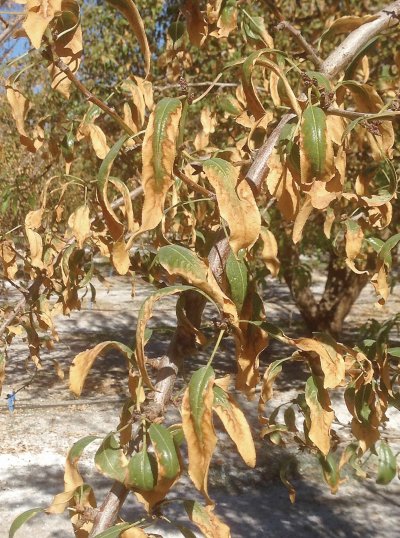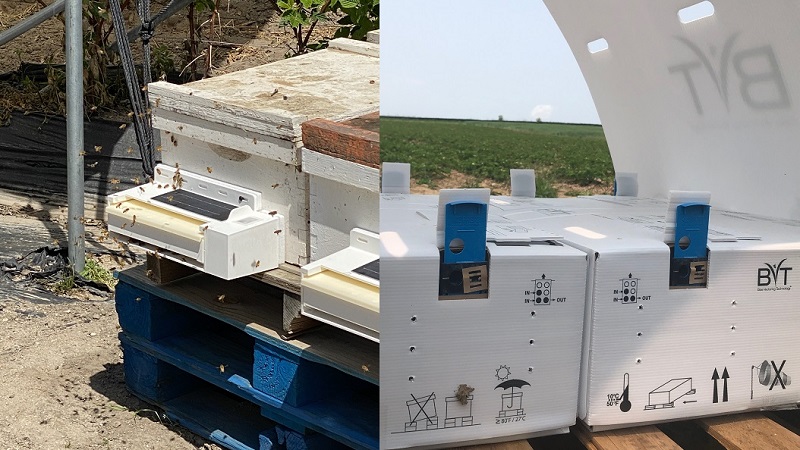Be Wary Of Increased Chloride In Almond Trees

Wes Asai
During the course of farming tree crops, it is a typical practice to run a leaf analysis during the growing season to assess the nutritional status of the orchard. This is used to determine the appropriate amount of fertilizers and amendments to apply to maximize production. At the same time, these analyses are used to identify possible toxic accumulations of ions such as sodium, chloride, or boron. With the low precipitation rates and limited irrigation supplies the last few years, there is an effect that is increasing each year that is not always visible to the grower.

Chlorides above 0.6% are shown on this almond tree.
(Photo credit: Wes Asai)
Salinity May Be Easy To Notice
Typically when a grower or PCA sees toxic levels of salts building up in an analysis, the plan includes applying soil amendments and sufficient water to leach these salts below the active root zone. These practices keep chlorides below the 0.3% levels for almonds and walnuts, and the sodium levels below 0.25% (almond) and 0.1% (walnut). During the last couple of drought years many orchards are seeing chloride levels in particular rise to unprecedented levels. It is not uncommon to see orchards with leaf levels of 0.5 to 0.8% chlorides that still appear “somewhat normal.”
The problem is that in these situations, even with the absence of acute phytotoxic symptoms, production is being compromised. In many ways the effects mock symptoms of low potassium. There is some leaf burn, little new terminal growth, poor spur development and small kernels. The long range effects are similar as well. Not only is current production affected, but without development of new spurs, there may be a lag-time of several years to get the trees back into normal production.
What Can A Grower Do?
Does adding gypsum or other calcium based amendments help? Maybe, but if sufficient topical water is not available to leach these salts, the problem will not be corrected. Can it get worse? Actually, yes.
Many amendments such as gypsum are themselves salts. When salts are not leached and additional salts (gypsum) are added to the same profile and not leached, the electro-conductivity (EC) will actually be increased. No correction of the problem will be visible, and it may even be compounded. Winter rains in the central valleys of California are not sufficient in most years to achieve this leaching.
This means that supplemental irrigation water needs to be applied in lieu of or in addition to winter rainfall to “double-bump” the infiltrating front of the water and help it to push below the root zone. The same applies to other amendments such as sulfuric acid, popcorn sulfur, thiosulfates, phosphoric acids and calcium solutions. Adding these amendments still necessitates the addition of sufficient water to leach any freed salts out the bottom of the root zone to be of any benefit.










